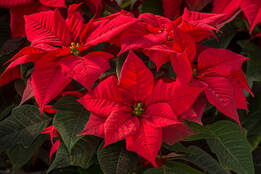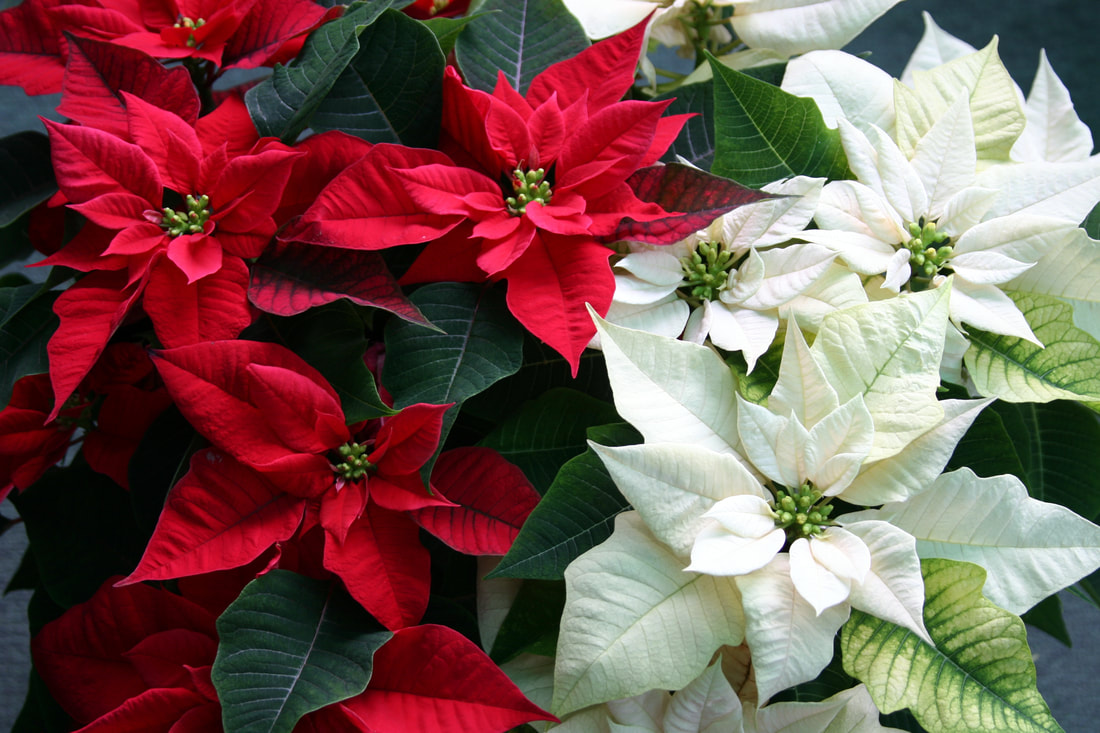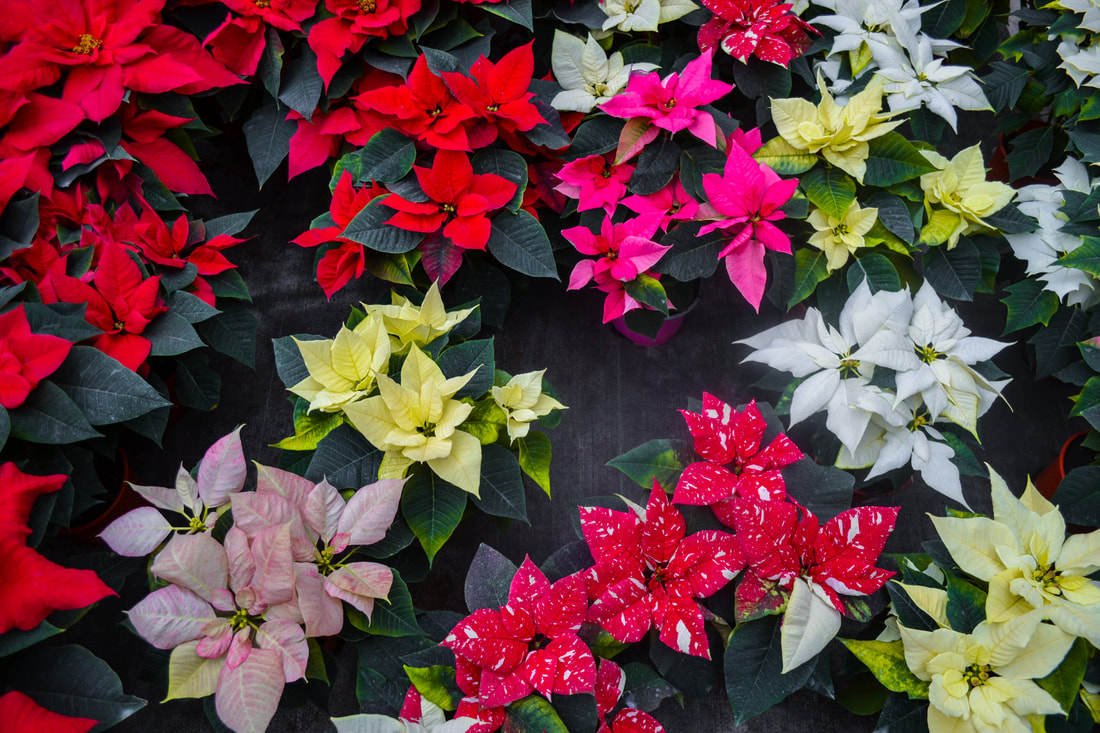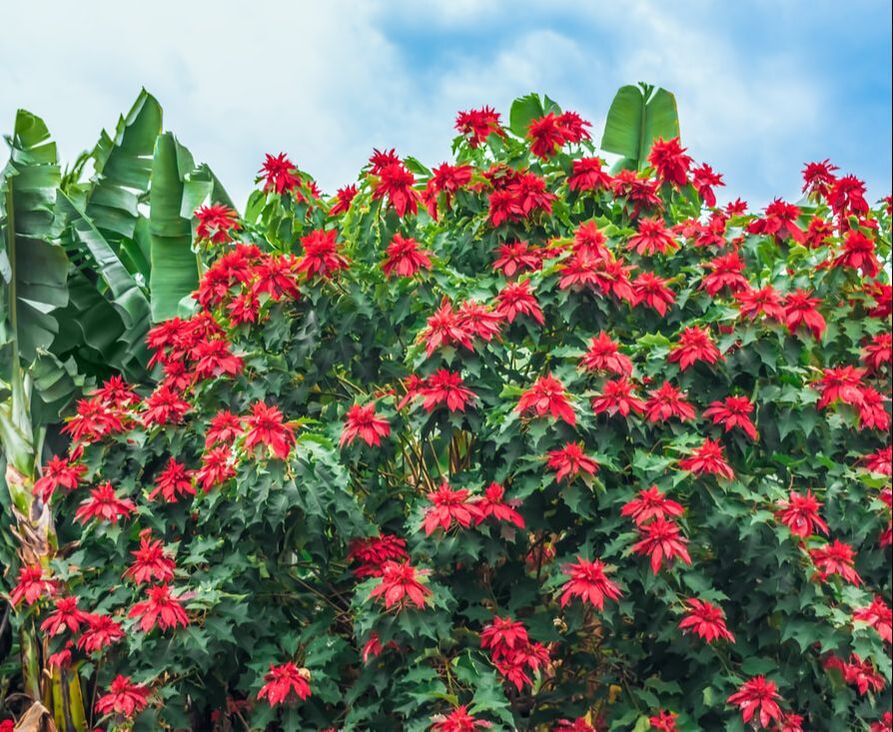|
Few plants are as associated with the Christmas season as the poinsettia, the colorful plant we see adorning the insides of homes and offices all throughout the month of December. It may seem a curious thing that this beautiful plant becomes so prominent during the coldest time of our year, given that it is a tropical plant extremely sensitive to cold temperatures, but not all Christmas traditions originate where snow falls. In Mexico, poinsettias grow to be larges shrubs and they naturally bloom during the month of December.Because it naturally flowered at this time, Franciscan priests began using Poinsettias in the Fiesta of Santa Pesebre nativity procession, and the pointsettia eventually became linked to the Christmas holiday. The poinsettia was introduced to the United States in 1825 by US Ambassador to Mexico Joel Poinsett, from whom its common name is derived, and it soon became part of our Christmas tradition as well.
People often ask if poinsettias are poisonous. While it’s true that they often appear on lists of poisonous plants, they are not poisonous in the sense that if you eat them you will become gravely ill or die. If you, or your child, or your pet for some reason decides to eat a bunch of poinsettia leaves or stems, you’ll probably find yourself with a bit of a tummy ache, and perhaps even vomit, but that will likely be the end of it. It’s worth noting that the same thing will likely happen if you, your child, or your pet decides to eat almost any other plant you’d find inside your home. What makes poinsettia a little different than those other plants is the milky sap inside the stems, which is actually latex. Some people have latex allergies, so exposure to the sap may cause itching or other reactions, but for those without latex sensitivity, it is completely benign. As mentioned earlier, the sap was once used as medicine, and as with many compounds, the difference between cure and toxin depends largely on the dosage and the individual’s particular response.
They are not cold hardy, so they will need to be overwintered indoors before being planted outdoors in the spring. Matthew Stevens is the County Extension Director and Horticulture Agent for North Carolina Cooperative Extension’s Pitt County Center. If you have any questions about this article or other aspects of your home gardening, please contact the Pitt County Master Gardener Infoline at 252-902-1705. Photos from iStock
0 Comments
Leave a Reply. |
Matt Stevens
Pitt County Extension Director & Horticulture Agent Archives
July 2024
Categories |




 RSS Feed
RSS Feed